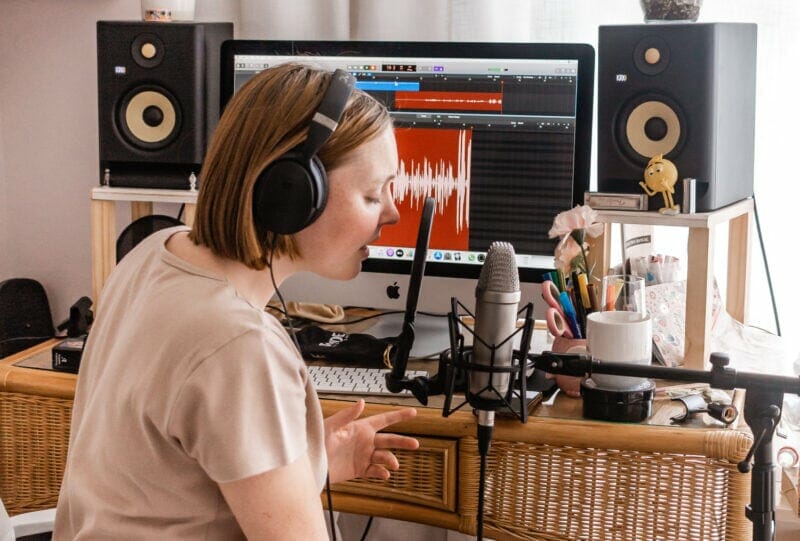Not all headphones are equal.
And you need to know the difference if you want the best mixes possible.
The two main types of headphones for home recording are closed-back and open-back headphones.
They each serve different purposes.
So in this post, I’ll cover when to use open-back headphones and the five best pairs on the market.
g>
What Are Open-Back Headphones?
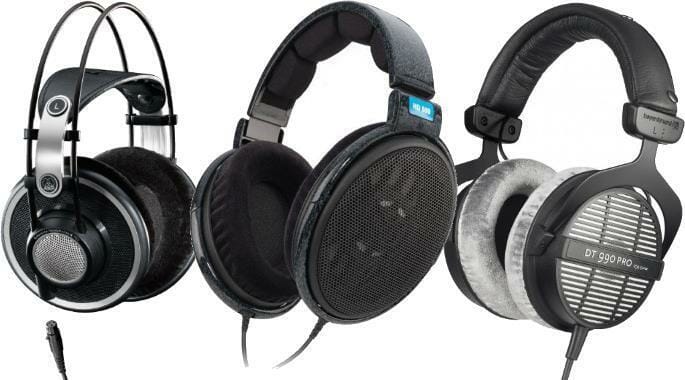
Open-back headphones are what you think they’d be. They don’t totally enclose the ears.
They allow air to pass between the ear cups and your ears. This keeps the pressure from building up within the ear cups, which would affect the sound.
Some of the audio escapes, meaning you get a more accurate sound.
However, this also means they don’t block outside noise. So not only will your sound be more accurate, but you’ll also hear things happening around you.
And because sound leaks out, they’re not good for tracking because you could have some mic bleed.
But open-back headphones are a necessity for your home studio. They’re meant for a specific purpose, and they’re the best option for that purpose (more on that below).
Open-back vs. closed-back headphones
To better familiarize yourself with open-back headphones, let’s look at their alter-ego: closed-back headphones.
Closed-back headphones are totally sealed around your ears. It minimizes the sound that leaves the ear cups and keeps a lot of external sound from reaching your ears.
Your music won’t sound as natural or accurate. But they’re the best option for tracking as there will be minimal mic bleed.
The Main Features Of Headphones
There are two important features of open-back headphones that I’ll cover: the driver and the frequency response.
Headphone Drivers
A driver is the most important part of a pair of headphones. It takes the electrical signal and turns it into sound.
They’re basically tiny monitors on your ears.
The three main components of headphones are a magnet (creates the magnetic field), voice coils (move the diaphragm), and a diaphragm (vibrates to create the sound). The size of the driver varies based on the headphone, but it’s usually between 20mm and 50mm.
Why does the size of the driver matter?
The bigger the driver, the better the bass and the louder the headphones will be. Contrary to what many people think, a bigger driver does not mean better quality sound.
A bigger driver also means the headphones may have a harder time producing higher frequencies.
Headphone Frequency Response
Frequency response refers to the headphones’ sound pressure level (SPL) across the frequency spectrum.

Measuring the frequency response tells us how much volume is at each part of the frequency range. So we can see how a pair of headphones will sound by looking at the SPL, whether it’s bassiness, lots of treble, and/or something in between.
It’s the best indicator of how the headphones will sound.
When To Use Open Back Headphones
So what is the best use of open-back headphones?
Mixing.
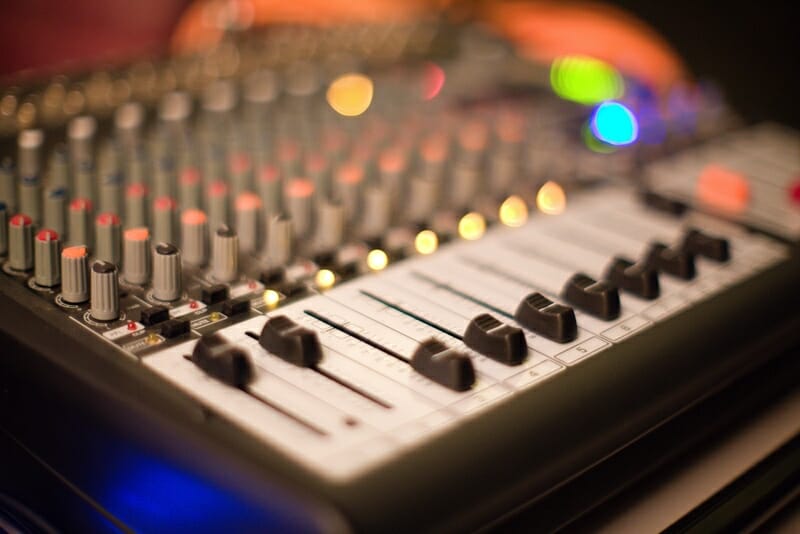
When you mix with open-back headphones, you get a more accurate representation of your audio. It’s closest to the way the parts were played.
This way, you’re able to better hear the layout of the instruments, as if they were on a stage. Open-back headphones also sound less compressed and more natural.
Plus, you’ll be able to hear a bit of your room sound because the headphones don’t close off your ears. You also get a bit of bleed between the left and right ears, which helps things sound more realistic.
Hearing fatigue is much less likely because some of the air pressure escapes the ear cups. And ear sweat is not a big problem either because the ear cups allow air to pass through.
The Best Open Back Headphones
These are the best open-back headphones for home producers. And this list has a wide price range, so there’s something on it for everybody.
Sennheiser HD 600

Although these may be more than some producers are willing to spend, they are a great buy because of the sound quality.
The bass quality is decent with a nice bump at about 100 Hz. On many tracks, the bass may sound a bit light. But on tracks with bass emphasis (like a lot of pop music), the bass will sound just fine.
The midrange is somewhat forward, making it more engaging and full.
The higher frequencies sound wonderful — the low-highs are smooth while the higher-highs aren’t overwhelmed by sibilance.
- Frequency response: 12Hz – 39kHz
- Driver size: 40mm
Philips Fidelio X2HR
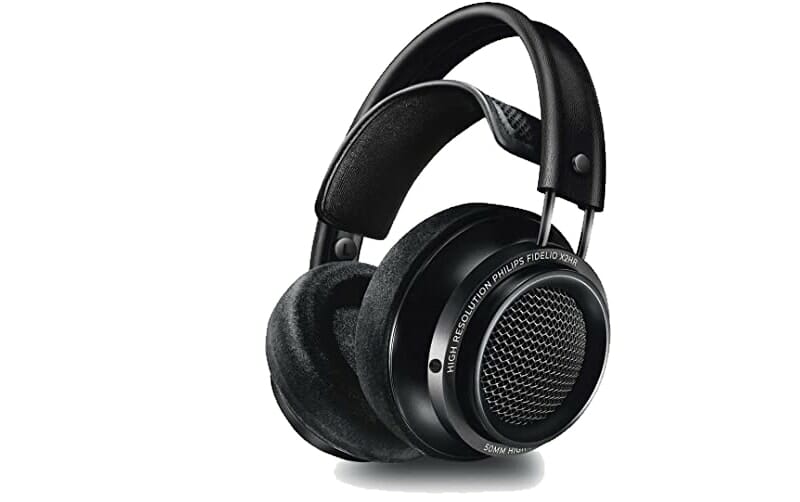
The X2HRs leak more sound from the earcups than a typical pair of open-back headphones. It’s because the drivers are also angled toward the ear canal, minimizing reflections in the outer ear.
These headphones sound very good with vocals, wind instruments, and cymbals. They’ve got a decent soundstage (how the instruments are laid out) and tight bass.
Plus, these are reasonably priced, so most home producers can afford them.
- Frequency response: 5Hz – 40kHz
- Driver size: 50mm
Beyerdynamic DT 990 PRO
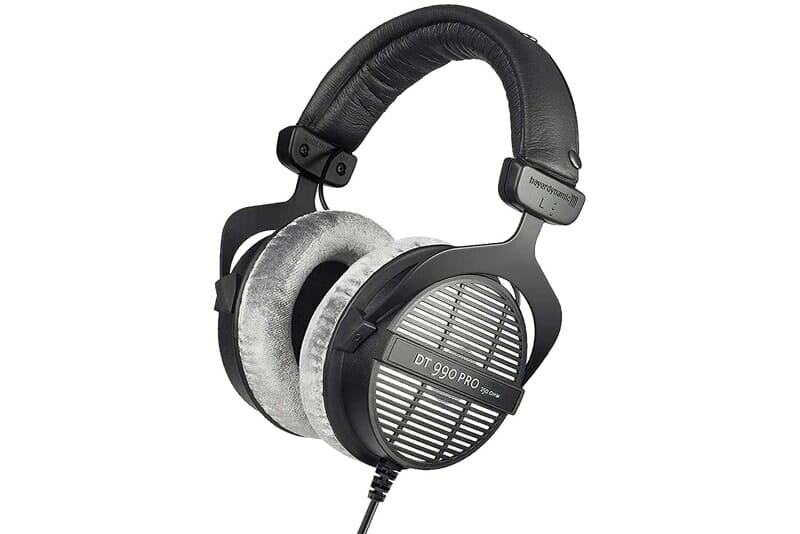
Compared to other open-back headphones in the price range, the Beyerdynamic DT 990 PROs are some of the best.
They’re well-balanced with a decent soundstage, a nice bump in bass, and undistorted highs. Overall, a pretty neutral sound, which is good for mixing.
They’re also super comfortable, helping you focus more on the music.
- Frequency response: 5Hz – 35kHz
- Driver size: 45mm
Samson SR850
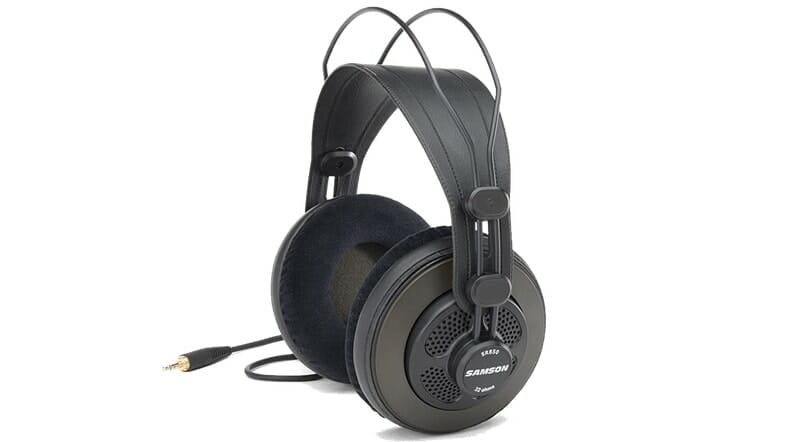
The SR850s are another pair of neutral headphones, making them ideal for mixing.
Overall, they have a nice balance across the general lows, mids, and highs. However, their SPL is not as wide as some other headphones in their price range.
- Frequency response: 10Hz – 30kHz
- Driver size: 50mm
Sennheiser HD 800 S
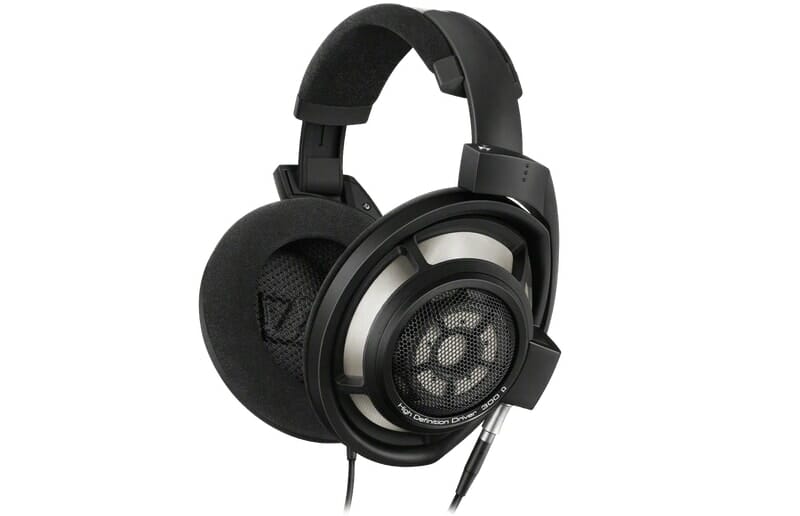
As the most expensive pair on this list, the HD 800 S headphones are most certainly the highest quality.
Their soundstage makes the music sound 3D, their SPL is extremely wide, and their sound is overall balanced. They make your audio sound huge.
The mids do tend to enmesh into the mix, but it’s not anything a little EQ can’t adjust.
- Frequency response: Hz4 – 51kHz
- Driver size: 56mm
Conclusion
When choosing a pair of open-back headphones, pay attention to the two most important aspects: frequency response and driver size.
These two measurements will give you a good idea of the quality before you buy.
Either way, you need a pair of open backers in your home studio. Especially if you plan to mix on headphones and want industry-standard tracks.


